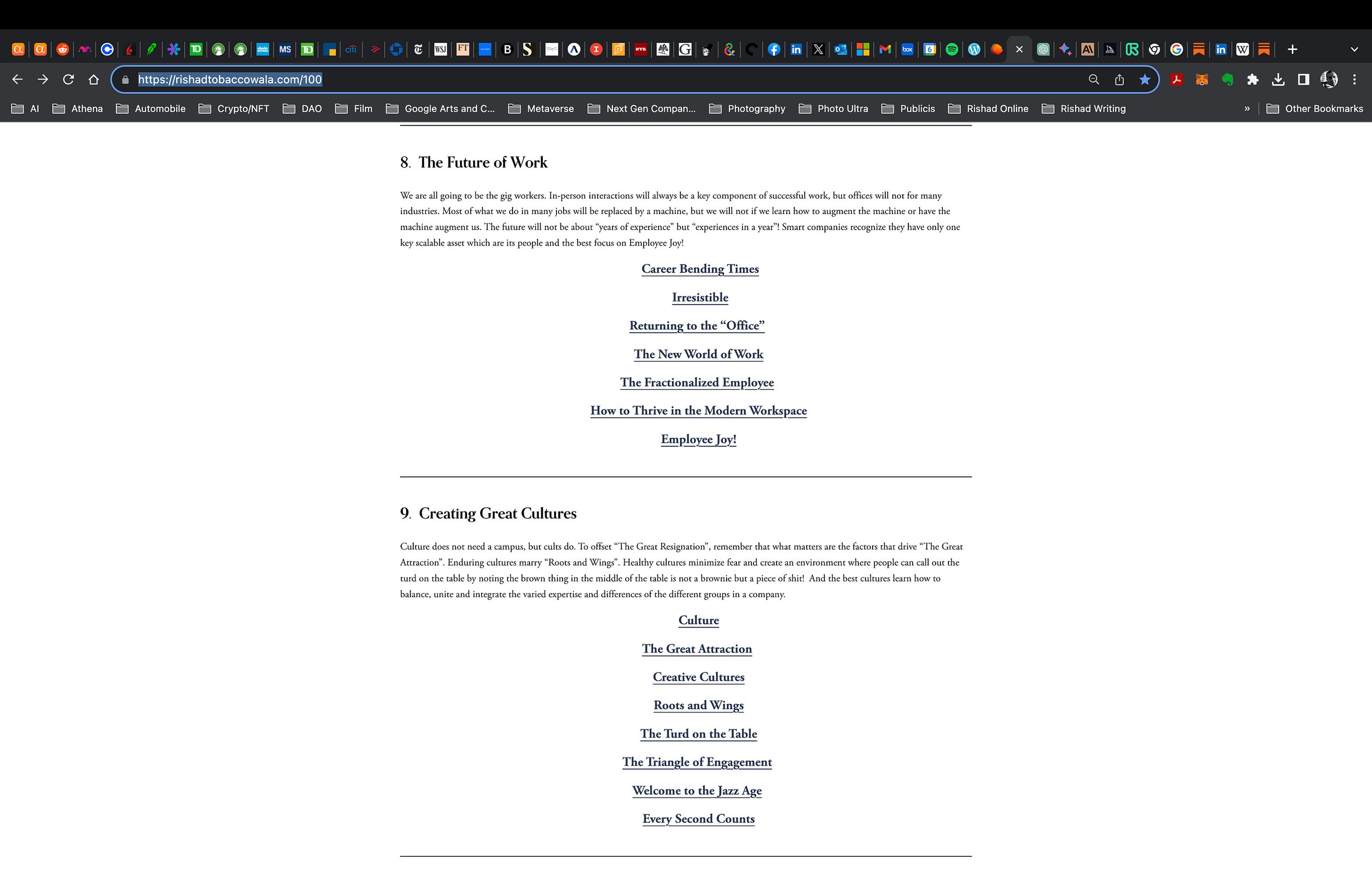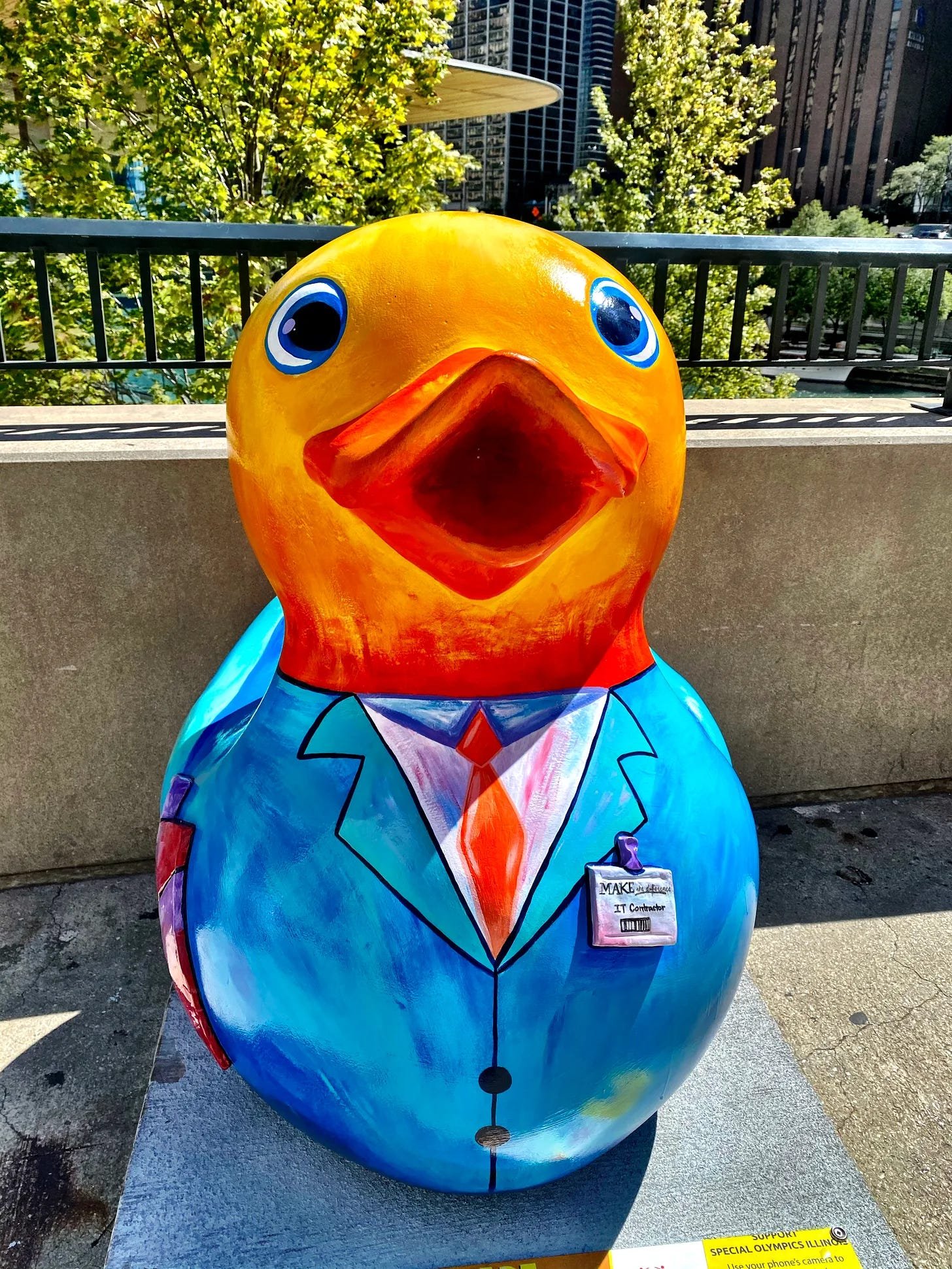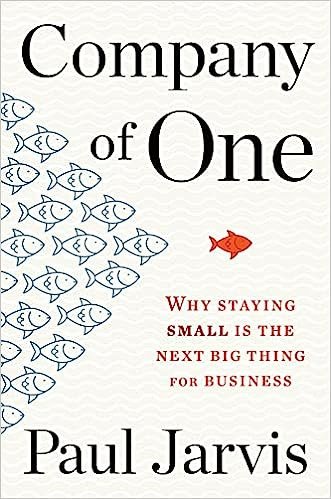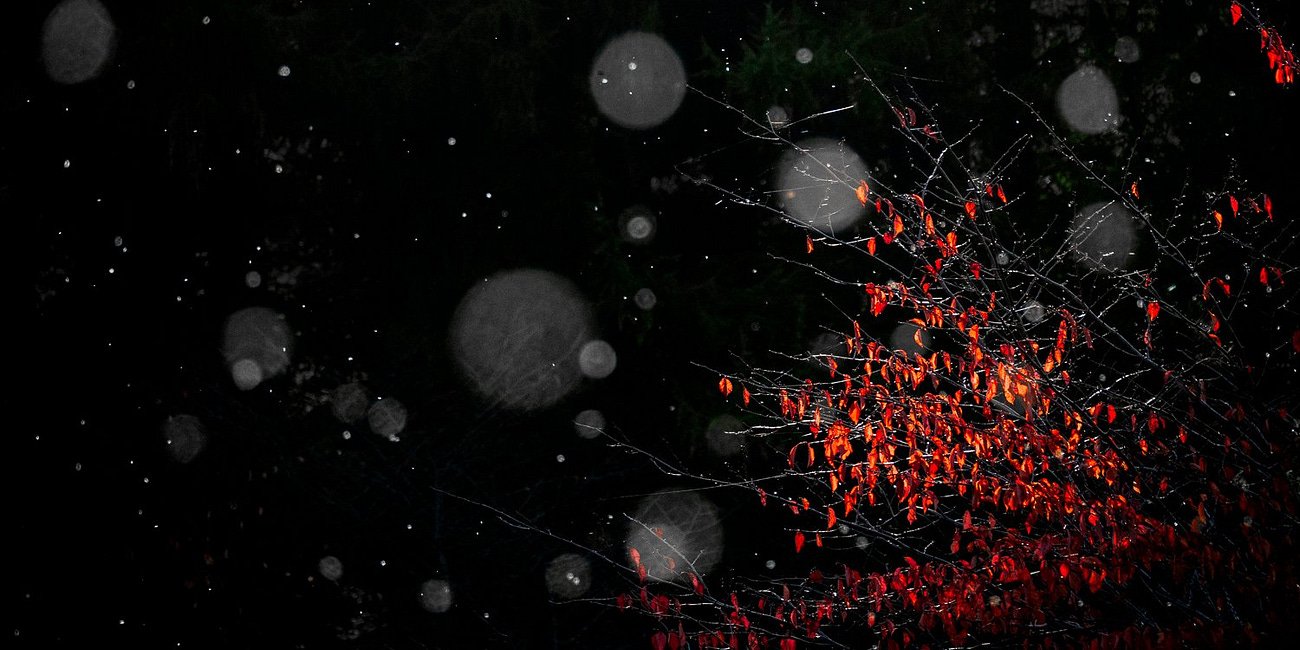Both Sides Now!
Photography by Bruce Barnbaum
The most successful organizations and leaders are rarely defeated.
They defeat themselves.
Three common symptoms of SDD or ‘self-defeat disease” are:
a) the inability to anticipate new competition,
b) a failure to see situation from another perspective,
c) self delusion due to a bubble of filtered thinking buttressed by sycophantic deputies.
One simple exercise to avoid this fate is to make it a point to see or demand to be shown or insist on trying other options and approaches opposite to ones recommended.
To always insist on both sides now!
Three simple exercises one can apply every time a key decision needs to made are 1) to integrate outsider perspectives, 2) to unite two diametrically different models and 3) to balance roots and wings.
Photography by Bruce Barnbaum
Think like an outsider/immigrant.
Earlier this week a long time friend of mine, Lou Paskalis, was in Chicago. During a drive I shared some key themes from a keynote I had given earlier in the week to a legendary company aiming to be bolder to ensure their continued leadership in a changing world.
One key point I conveyed was the importance to look at things from an outsider’s perspective or that of an immigrant.
While not all of us are immigrants to a country we are always entering new companies, new jobs, new cities and when we arrive we come without the baggage of knowing and the wonder of fresh eyes and thinking. We wonder why certain things are the way they are and our acts of noticing and curiosity are acute. This allows us to bring in fresh perspectives. It is one of the reasons successful firms combine experienced individuals with long tenure with new external talent.
Lou mentioned that one of his bosses at American Express (the legendary John Hayes) had given him similar advice when Lou had just been hired by saying “Lou do not become one of us”.
It is important that individuals while they respect and align with a culture of a firm do not get assimilated by the Borg ( Star Trek!)
If one like the Mandalorian and begins to believe “This is the Way” we will be beaten by the Lawrence of Arabia’s who say “Nothing is written”
Combine an insiders understanding with the provocative thinking of an outsider.
Both sides now!
Photography by Bruce Barnbaum
Only the Schizophrenic Thrive.
Andy Grove the late CEO of Intel once wrote a book titles “Only the Paranoid Survive”
Today we are living in a connected and constantly shape shifting world and paranoia is a recipe for decline as Intel has suffered from.
One cannot succeed without collaboration, partnering and trusted relationships.
Seeing all outsiders as the enemy to be resisted or defeated is a recipe for irrelevance.
Microsoft under Balmer followed this “Windows good everything else bad” paranoia approach and it took a partnering oriented “Linux is also critical” and it is “Azure no longer Windows” Satya Nadella to turbocharge Microsoft.
Companies need to optimize for today AND re-imagine for tomorrow sometimes with different teams with different incentives and goals to ensure continued relevance.
The biggest mistake is to somewhat focus on today with a leadership team incentivized for today while running “task forces” and “models 2.0” as a side project with a diluted focus on tomorrow ( a second class team with a limited budget and constraints told not to rock the boat or destroy the existing business model).
These optimize neither today or tomorrow but create a warm goo of board documents and sinecures for people the company does not know what to do with (notice how many tomorrow projects are run by individuals who did not do a good job running today ?).
Instead, empower some real superstar talent with real budgets and minimal constraints to do what it takes to win tomorrow or put today’s firm out of business while also having world class teams focussed on delivering the margins and leadership needed today to fund tomorrow.
Two models acutely focused. The first on today and one on tomorrow both reporting to the Board and CEO.
Both sides now !
Photography by Bruce Barnbaum
Roots and Wings.
If every individual and company is a story with a place we came from, every individual and a firm is also about a place we are going to.
The best leaders and firms all integrate the dualities of roots and wings.
Too rooted and we may wither way as changing times and climate bring drought to the place and way we were.
Too winged and we may be blown away in the gusts of change.
Too rooted and we may be seen as old school, hide bound to tradition and inflexible.
Too ready to fly with change may find us painted as unreliable, undisciplined, and short-term oriented.
Transformation is twisting ourselves and companies into new shapes with the clay of what we were and new skills and pieces we acquire.
To believe and better understand where you are going people want to know from where you are coming.
Heritage, provenance, legacy, story, first principles, and foundations are all critical.
So are re-invention, setting sail, taking risks, pioneering and re-imagining.
Roots and wings.
Both sides now!
Attention.
Photography by Karl Taylor
A definition of success is the freedom to spend time in ways that gives one joy.
Joy is more than happiness which is often transitory as it ebbs and flows with external events.
The joy that comes with deep satisfaction and contentment however endures and its contours do not waver with the oscillations of the transient.
Experience, time, and observation reveals there are ways to architect joy.
To be free to use your time to pay attention to what matters and what matters to you.
Or as the late David Foster Wallace said in his mind shifting talk This is Water:
“The important kind of freedom involves attention and awareness and discipline and being able truly to care about other people and to sacrifice for them over and over in myriad petty, unsexy ways every day. That is real freedom. That is being educated and understanding how to think. The alternative is unconsciousness, the default setting, the rat race, the constant gnawing sense of having had, and lost, some infinite thing.”
Every day there are more and more things that vie for our attention. This has been true long before algorithmic social media or soon the customized cuddle puddles of applied statistics ( also known as AI) transforming code to vie for our attention.
In “Things of the World” the poet Kay Ryan writes:
“Wherever the eye lingers
it finds a hunger.
The things of the world
want us for dinner.
Inside each pebble or leaf
or puddle is a hook.
The appetites of the world
compete to catch a look.”
Above is a cover illustrated by the cartoonist Chris Ware from nearly 15 years ago for the New Yorker described by Francoise Mouly, the Art Editor of the New Yorker.
“Chris aims at pinning the butterflies of our most basic and universal emotions. His beat is daily life: how we relate or fail to relate to each other. For a Halloween cover, Ware stayed away from the usual Halloween signifiers of kids in costumes, pumpkins and straw, colorful candy. He condensed the Halloween narrative into the upturned faces of the children as they knock on a door-and behind them on a street, the parents faces turned downwards towards their phones. Both are slivers of white masks, the parents faces illuminated by the light of the phones. The eager young excitement and the jaded boredom exist in perfect contrast…”
Photography by Gary Winogrand
The Garry Winogrand Way of Seeing
Garry Winogrand who died in 1984 was the first digital photographer decades before digital in that he was not constrained by the scarcity of film and took over a million pictures. He combined a disinterest in technique with an obsessive devotion to shooting on the street all day, every day.
Garry was most alive when he was outside of himself which was when he was behind a camera lens. He once said “I get totally out of myself. It’s the closest I come to not existing, I think, which is the best – which is to me attractive.”
To him seeing was key:
“Sometimes I feel like … the world is a place I bought a ticket to,” Winogrand once said. “It’s a big show for me, as if it wouldn’t happen if I wasn’t there with a camera.”
“When I’m photographing, I see life.”
Garry Winogrand suggests to see better we need to look more often, look with different perspectives and look where others do not.
Photography by William Eggleston
Experience, time, and observation reveals there are ways to architect joy.
What makes the ordinary and every day extra-ordinary is that one day it will not be so.
There will be a last day a child will crawl. A last day you will see someone. A last day you will visit a place or drive a car or go to a restaurant. Sometimes we know the last times and often we do not. When we are aware of the last times, we have a higher sense of attention and a sensitivity to the specialness and the passing of the moment.
But these last times come every week and sometimes every day.
The ordinary becomes extra-ordinary when we pay attention, and we find poetry in the crevices of every day.
As some of you may have noticed, a couple of weeks ago, I offered a FREE spot at the Quilt AI event in NYC on Sep 06, 2023. My post received an overwhelming number of requests which far exceeded the slots I had. I spoke to the Quilt AI team (am on the Board) and have received a few more FREE slots. And all attendees will receive an autographed copy of my book.
Titled the “AI-volution of Culture”, it is structured as a day of blending AI and Culture (or math and meaning, as I like to call it) to drive better marketing.
This is the link for registering for the event: Culture eats AI
Please use the free code: rishadxquilt
Speakers in addition to me include:
Gillian Tett, Chair of the Editorial Board, Financial Times
Jeremiah Lowin, the CEO of Prefect and Marvin AI
Deepa Mehta , the Oscar nominated filmmaker
Bhaskar Chakravorti, the Dean of Global Business, Fletcher School, Tufts University
Luke Burgis, Author & Entrepreneur
David McCandless, Journalist and Designer
Katherine Ann Paul, the Curator of Asian Art, Birmingham Museum of Art
Loss. Love. Learning.
Rishad Tobaccowala
Loss.
Loss is central to the human experience in three ways.
First, is we often lose in our attempts to succeed. We lose promotions, jobs and opportunities. We lose money and valuable assets.
Many times, we also win.
Some people win a little and others win a lot.
But we all lose.
But these losses however daunting and disappointing are not the big ones.
The second set of losses are the losses we will face of loved ones and friends either because relationships end, or death comes.
And our final loss is that of ourselves.
Our health.
And then our lives.
Franz Kafka wrote that “the meaning of life is that it ends”
How we live amidst these losses defines a large part of life.
The joy we make is because time is precious, and this moment of victory may not last forever.
Given that loss is part of human existence it pays to be kind and to think about how to help those in loss and deal with and recover from loss.
To learn to practice “personal resurrections” after setbacks and to endure and keep on growing and going.
Rishad Tobaccowala
Love.
A big part of what makes life worth living despite the guarantee of loss is love.
Love of people, of work, of art, of culture, of craft and of things and hobbies.
It is in fact this love and attachment that is deeply intertwined with the feelings of loss.
The Buddha said to avoid suffering one should avoid attachment.
Attachment is programmed into our DNA, so as a way of living and an ideal or a guiding path this is all well and good but is hard to live this way.
Love does not compute; and computers though they are getting increasingly advanced into deluding us that they love us since they ingest all our stories and then customize their reaction to be our “personalized” friends cannot love us.
In part that is because they cannot feel.
And therefore cannot feel loss.
And with love comes loss and love is an anti-dote to loss.
Also, though we individuals care about ourselves and what is ours, it is the love of something bigger, greater and outside us that often matters more.
Thus the human search for purpose, identity, meaning and belief.
Rishad Tobaccowala
Learning.
Today we have large language models that learn by ingesting, sorting, parsing, co-relating, re-combining and digesting all they can eat.
It is clearly a form of learning and the machines are getting “smarter”
Thus while machines may not know about love and loss they definitely can learn.
But do they feel joy as they learn?
Without the reality of loss or the feeling of love can they turn information into insight into wisdom?
Learning is particularly joyous.
Learning in its first form is building knowledge.
With great knowledge and practice we build skills and craftsmanship.
Human progress has been driven by learning and passing on the learning to those who follow.
We architect, hone and sculpt our lives into forms that fit and resonate.
Learning is also seeing things from other perspectives which gives us understanding.
Sometimes if we are lucky, we can graduate from knowledge, skills and understanding to wisdom.
Love, loss and learning are intertwined with each one feeding and influencing and resonating with each other.
Life is about love, loss and learning and how we live our life is deeply affected by how we incorporate and then unify, balance and integrate them into our lives.
Three Years Later…
This is the 156th issue of this thought letter.
It has been published each and every Sunday morning (Central US Time) for three years.
The thought letter was conceived to be both a gift to the reader in that it would be totally free, 100 percent opt-in, easy to opt out, would carry no advertising, nor use the mailing list in any way besides to email the weekly post.
If done right it also be a way to build goodwill for the author.
Three years and a quarter of a million words later ( 5 full length books! ) the thought letter has nearly 22,000 subscribers each of whom have chosen to enter their email address into the subscription box, enjoys high engagement (weekly open rate of 48%), a very low opt out rate ( about .1% or 25 readers of 22,000 a week or a 5% annual churn) and adds about 150 new readers a week.
Subscribers include hundreds of CEO’s, thousands of C-Level executives with a concentration in the fields of marketing, technology, strategy, innovation, HR and education.
The readership far exceeds the 22,000 subscribers with a much larger group of readers engaging with the content in other ways including LinkedIn ( last week’s post on A Company of One was seen by 30,000), or in other publications where it is re-published including Media Village and The Continuum among others in the US and around the world, and most importantly it is forwarded weekly across organizations and to friends and often to the readers children!
Readership spans 135 countries with most of the readers living in eight markets ( United States and Canada in North America, India and Singapore in Asia, the United Kingdom, France and Spain in Europe and Australia).
The five most popular posts have been:
Re-Thinking Presentations which suggests that if one cannot make a case in 9 slides or less one does not have a case to make.
12 Career Lessons which takes ten minutes to read is far more useful than most career books for any stage of one’s career.
The Future of Marketing is People reminds us that most marketing speak including consumer fixation is possibly wrong and most firms are severely marketing challenged particularly in the Board Room.
De-Bossification! is a real thing and if you are or want to be a “boss” watch out! It is one of the reasons companies are struggling with hybrid-remote work.
Ruptures in the Mediascape written two years ago anticipated all the big shifts that have happened since.
Also strongly recommend these five:
The Four Shifts which explain the four shifts that are driving the future which every individual and company needs to align with.
The Six Keys To Change explains why change is difficult and having a strategy, M&A plan and a re-org alone almost never work.
Six Ways to Be and Feel Better will likely leave you changed as a person and is the one most shared by parents with their grown kids.
Architecting Joy begins by defining success as the ability to spend time in the ways that give you joy and then builds from that…
Time Passages reminds us that time is all we have and looks at it through different prisms.
Now 3 years of writing distilled and organized on one page!
The 156 pieces written over the past three years span 12 different subject areas including The Future, Managing Change, Becoming More Effective, Leading with Soul, Creating Great Cultures, The Future of Work, Managing Careers, Personal Growth and even Wisdom but have kept away from news and politics and therefore have remained evergreen.
You can access the best of these pieces organized, curated and kept up to date here: https://rishadtobaccowala.com/100
This one page is accessible on any device anywhere in the world totally free and all the materials can be used with or without attribution.
Many professionals book mark it and use it as a thought starter (like a GPT-4 but written by a human) when they are grappling with a topic like managing teams and creating cultures, learning to learn or on remaining relevant in an AI age. Some share articles as part of their monthly or weekly all hands. Others use the many frameworks shared to help brainstorm ideas.
Do click here and take a look at it. It could save a lot of time and help one become more productive.
Thank you for being a reader and please share this post with others who may benefit from this writing by forwarding it or clicking below:
And if you would like to get this writing delivered every Sunday for free please subscribe
A Company of One.
It is projected that in 2027, 86.5 million people will be freelancing in the United States making 50.1 percent of the population.
A combination of five forces is driving this re-configuring of the workforce:
Aging: In the United States 10,000 people turn 65 every day and many of this group continue to work because they need to so as to make ends meet, or want to for reasons of identity, community, purpose and/or growth but cannot or do not want to work full time for a company. Many firms which are finding it difficult to access certain skills and experience are now becoming far more flexible in their approaches to retaining their seasoned workforce on a part-time basis.
New Mindsets: 76 percent of Gen-Z want to work for themselves and 66% of Gen-Z who hold a full-time job also have a side-gig or side-hustle. In addition, Covid-19 have many people re-framing the question of how life could fit into work ? with how does work fit into a life?
Remote/Hybrid Work: Remote-Hybrid work provides the flexibility to work anywhere for anybody which can enhance opportunities to get work while moving to locations that cost less which allows for more career options.
The Technology powered Gig-Economy: New marketplaces from Fiverr and UpWork to find talent and work, AWS and Open-AI to access technology, Etsy and Shopify to sell and connect to marketplaces, Tik-Tok and Meta to connect and brand, combined with companies need to remain agile is driving more talent and firms to a plug and play workplace.
AI and Web 3: While AI may not lead to fewer jobs it is going to change the nature of most if not all jobs and the half-life of skills are going to decay considerably faster. Web-3 while out of favor will eventually enable more ownership and equity for individuals. Most importantly many of these technologies are now providing super-computing power to everybody who cares to learn, allowing individuals to get all the benefits of scaled companies. Otter.ai allows you to have an AI assistant to take notes and write meeting summaries. Side-Kick and Magic from Shopify provides entrepreneurs with an army of digital helpers which allow for scaling without adding staff.
Whether it is finding work post-retirement, working a side-hustle or passion project to make ends meet or build an expertise or create an off-ramp, or filling the gaps between full-time employment at firms which are often trigger-happy in adding and removing talent from their payrolls, the smart professional prepares to be a company of one.
But even if you do not fit any of these categories be aware that companies are creating internal marketplaces where opportunities can be identified and applied for and teams of experts can form and dissolve around projects.
As a result, for an individual to thrive in a company they will need to learn how to operate as a company of one. The combined power of the Avengers is because each of the Avengers is powerful on their own and not just because they learn to work as one.
Think of yourself as a better paid Uber driver with benefits if you work for a company.
If your expertise is needed at that time or in a particular market and location, and your collaboration and ability to work in teams is highly rated you will be in demand.
If not, as companies manage and monitor costs and increasingly find ways to plug into resources all the time everywhere you will find yourself parked permanently.
Or consider the Hollywood model where expertise come together on tv or movie projects and then the people disband and move on. Very few people work at a studio. Most people work in teams where they bring their skill whether it be casting, directing, catering or make up etc. The future of business will be similar as companies begin re-aggregating expertise around projects versus having hordes of generalists or people hanging around for a project. McKinsey and Bain have done this for years.
I am not suggesting that everyone will be a freelancer going from gig to gig but if you build your career with the mindset of continually honing expertise, working well with other people in teams and being flexible you will succeed in your company of tens of thousands versus thinking of yourself as a cog in big machine waiting for someone to care for or build your career.
In fact, I strongly encourage people to stay if they can at their firms as long as they are growing or can find opportunities to grow. Make no mistake there are huge advantages to work amidst people you can learn from, with infrastructure that these firms have, their reputations that create a glow and aura around each talented individual, and growing because access to amazing Clients, big challenges and amazing leaders and mentors.
But to succeed over the long run in a firm you need to maximize your options. If you have options, it means you are market competitive, and it allows you to tolerate a lot of drama and day to day nonsense at your current firm because you care about the firm and you know you have options. Because you have options you have skills that are valuable to your firm. People stay a long time in firms where they are growing and building skills and they never feel trapped.
You stay because you can go.
To thrive in a company today regardless of the size one must be responsible for one’s own career and ensure one is remaining relevant and not living on the fumes of past successes or believe that change will come slowly.
Becoming a Company of One.
1. Read A Company of One by Paul Jarvis. He asks us to consider if the real key to a richer and more fulfilling career, is to be able to work for oneself, determine one’s own hours, and become a (highly profitable) and sustainable company of one? It is critical like never before to identify opportunities that combine your skills and the market. To thrive means to “flourish by doing what one is best at for which there is a market.” Do not wait to find this later when you are out of work or under pressure but do so now. Finding what you flourish at allows you to further your career at your existing company. Again, operating with a company of one mindset does not mean you need to work in a company of one but it is a mindset that ensures you are honing skills and have options which allow you to stay in your firm.
2. Architect, hone and sculpt your key superpowers: The true power of any organization is a combination of th power of the talent to work as one but also that each person has superpowers and is very talented in some niche, expertise or craft. The Avengers are successful not just because they work together but because each one of them whether it be Wonder Woman or Iron Man have their own unique powers. They have powers of “one”.
Career Turbocharging is a piece that helps you identify your superpowers:
Career Turbocharging!
RISHAD TOBACCOWALA | DECEMBER 19, 2021
3. Build out your online and digital presence. Your resume is not what is on your hard drive or LinkedIn. It is increasingly your digital presence, particularly the first page that people see on Google when they search for you or the answer to a prompt “who is X” on GPT-4, Bing, Bard or Claude.
Go search for yourself but do not look just at the search results. Click the news tab, the image tab, and the video tab and recognize that this is the first impression that will be made and also this is what the AI engines will ingest. Ask a chat bot about yourself. This is “you” as the future becomes more distributed and digital. Try searching for your colleagues and competitors on search and chat-bots and you will be surprised at how your perceptions of a person can change.
To help create a better presence think of being active on two or three platforms like Twitter (X), Threads, Instagram, Tik-Tok and LinkedIn, develop a website (using Square Space or some other service), consider writing a blog on some passion or hobby or even start a newsletter.
4. Invest deeply in relationships including the firm you work at: In a connected age it is critical that you have as many allies and people who will vouch for you and serve both as leads and references.
Try to stay as long as you can at a firm working to fix issues with jobs and people there vs giving up or leaving. Do not believe the grass is greener on the other side because you will find that it is often because it is fertilized with bullshit.
If you do leave do not burn bridges because everyone will check with the places you worked at or the people who worked there especially if you decide to become a company of one. Elegant exits are as critical as energetic entrances.
Think long term. Help as many people as you can as often as you cannot just because it may help you but you will feel great doing so. Even if you spend your entire life working at a large company as most people do keep thinking of yourself as just yourself without your title, the budgets and the armies of supplicants or staff. Many people confuse their title with themselves and are shocked to find the hard way that it was the title and not them that people were genuflecting too.
5. Invest in learning: The day a human being and a professional stops learning is the day they stop growing and career decay sets in. Anybody who does not spend a few hours a week learning is falling behind today.
Here is everything I have learned about learning.
Learning to Learn.
RISHAD TOBACCOWALA | FEBRUARY 13, 2022
We are entering a brave new world and the future is hard to tell. Maximizing optionality in a changing world requires each of us to think with a company of one mindset even if we wish to spend decades at our current place of work.






















